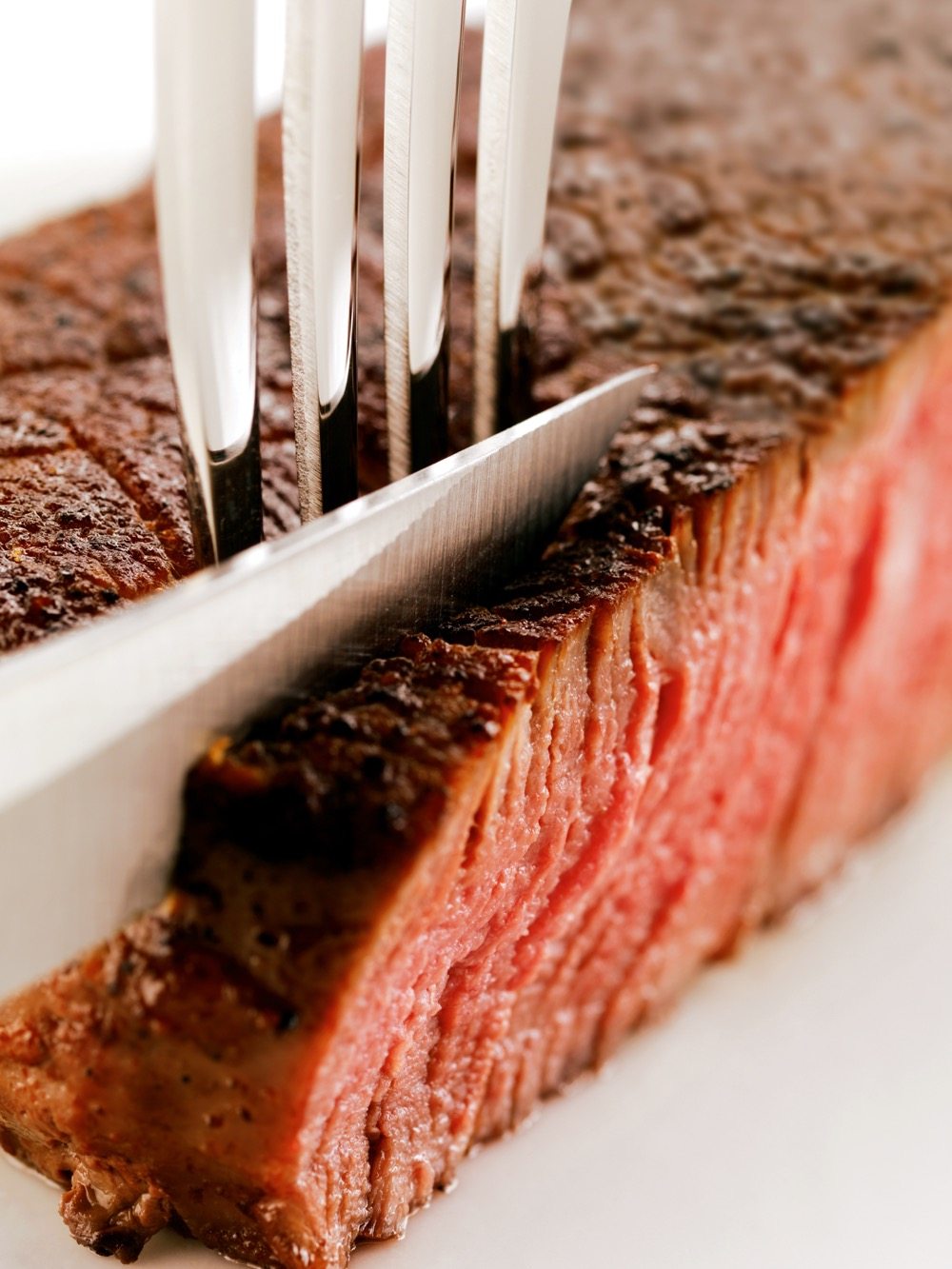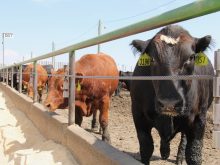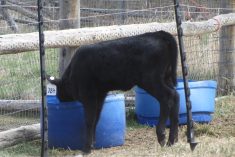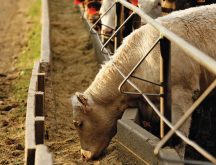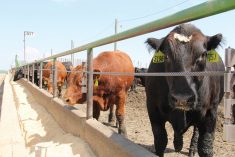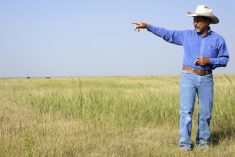How much water does it take to produce a pound of beef? That may not be the most urgent question on the mind of beef producers, but for some schoolkids in Surrey, B.C. it was an important question to have answered for a class project.
And when multiple letters asking the same question recently landed on the desk of Reynold Bergen, science director with the Beef Cattle Research Council (BCRC), it became a clear sign the question needed to be answered — scientifically and correctly. (It wasn’t an easy number to calculate by the way, but the most simple figure if you just look at how much water a beef animal drinks is nine gallons of water per pound of beef — but there’s more.)
Read Also

Harvest wraps up and fall work begins
At the Eppich famly ranch in western Saskatchewan, the fall harvest was successful with few breakdowns, cows and calves have been sorted and a new tractor has arrived
Again, a beef animal’s water consumption isn’t the most pressing research project on the BCRC agenda, Bergen told delegates attending the recent Alberta Beef Producers annual general meeting in Calgary.
Unravelling the science to produce healthy, high-producing and efficient beef cattle is important. But Bergen saw it as an opportunity to use good science to also answer questions that are important to the general public, consumers — including this class at a Surrey elementary school.
Questions such as how much water it takes to produce a pound a beef do fall within the scope of work conducted by the Canada’s Beef Science Cluster as it looks not only at beef production-related issues, but also at environmental issues. The Cluster is a research partnership between Agriculture and Agri-Food Canada researchers and BCRC. The environment, greenhouse gas (GHG) issues, sustainability — these will become even more important to the future of the beef industry, Bergen says.
The question of water and beef is bigger than it sounds, he says. “If you look online, the answers on the internet are all over the board.” The figures range anywhere from eight gallons to 2,500 with even some suggestions up to 10,000 gallons. “There are lots of answers, but none agree.”
He says it is one thing just looking at how much drinking water an animal consumes over its lifetime. But it becomes a much more complex question if you also factor in the amount of water needed to produce feed for that animal, along with water used in processing to produce a carcass and eventually cut and wrap a pound of beef.
It becomes a multi-faceted and complicated calculation, says Bergen. Among others he enlisted the help of Getahun Legesse, a research associate at the University of Manitoba working on a collaborative project that aims to define the environmental footprint of Canadian beef.
Now much to grow grass?
In looking at water requirements aside from drinking water, Bergen says there are many variables. With grain and hay for example, they had to look at varying yields under varying growing conditions. That involved looking at weather patterns, rainfall figures and statistics for yield estimates over several growing seasons for a wide range of feed and forage crops. Along with water to produce feed, they also calculated water use in processing facilities.
In working through the process they split water requirements in two — ‘green water’ was basically snow and rainwater; and ‘blue water’ was all the human-delivered water.
After the all the number-crunching, the project estimated it takes about 1,590 gallons of green and blue water combined to produce a pound of beef. Most comes in the form of green water (rainfall) with less than one per cent in the form of blue water. If you just look at drinking from a water trough it is about nine gallons of water per pound of beef, the rest of it relying on green water sources.
The water requirement project did reveal an important point for an industry that looking to reinforce with consumers and general public the sustainability of the beef industry. Much like on the greenhouse gas (GHG) side where the environmental footprint of the beef industry has been reduced by about 15 per cent recent years, water requirement to produce a pound of beef has also been reduced by about 17 per cent in recent years — much of that is achieved through more efficient breeding of crop varieties that produce more yield with less water.
“While there are many areas of important research, I believe there will be increasing emphasis on the environment and sustainability issues,” says Bergen. “And it will be important that we provide the science behind the beef facts to support public and consumer information.”


